It looks like you're using an Ad Blocker.
Please white-list or disable AboveTopSecret.com in your ad-blocking tool.
Thank you.
Some features of ATS will be disabled while you continue to use an ad-blocker.
19
share:
Here are some of my favorite tidbits about space that can make you feel small, amazed, and in wonder about this amazing universe we inhabit. Some of
these I'm sure people already know but they are good to go over every once in a while. Also if anyone has any they would like to add, please feel
free to do so.
You could fit ALL of the planets in our solar system between earth and the moon with about 5,000 miles to spare.
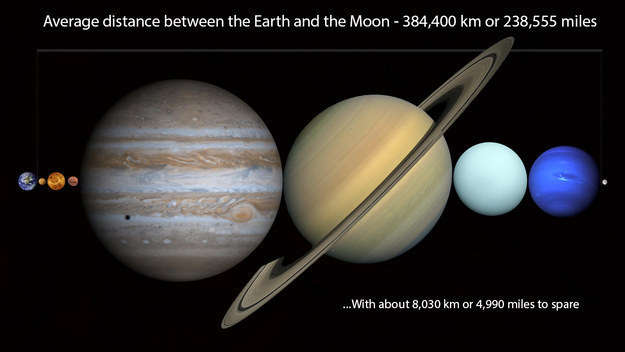
Light travels at 186,282 miles per SECOND! Most people know that even at that speed it takes 8 minutes and 20 seconds to reach earth, but did you know it takes 5.3 hours to reach Pluto?
The circumference of the Earth is 24,901 miles. You could fit 1.3 million Earths inside of the Sun. The Sun makes up 99.8% percent of the mass in our solar system. If the Sun was a soccer ball in New York Cities Central Park, the Earth would be a pea in Hawaii.
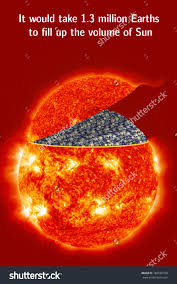
Though our star is no slouch, it is also not the biggest in the neighborhood. The biggest we have discovered in the universe is UY Scuti. A bright red super-giant and pulsating variable star in the constellation Scutum. It has a volume nearly 5 BILLION times that of the Sun! A hypothetical object travelling at the speed of light would take about seven hours to travel around UY Scuti, whereas it would take 14.5 seconds to circle the Sun. If placed in the center of our solar system it would engulf anything through the orbit of Jupiter.
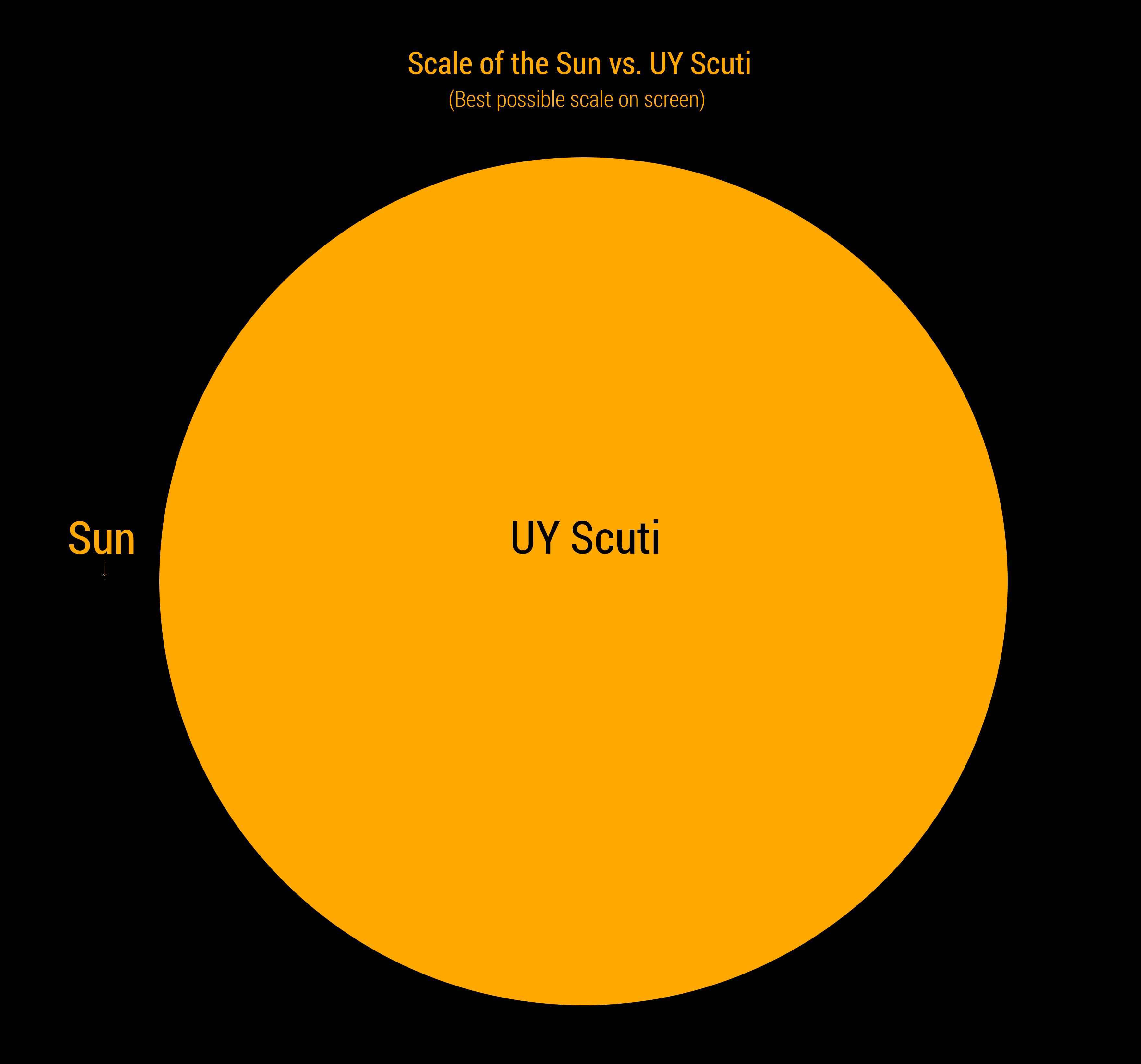
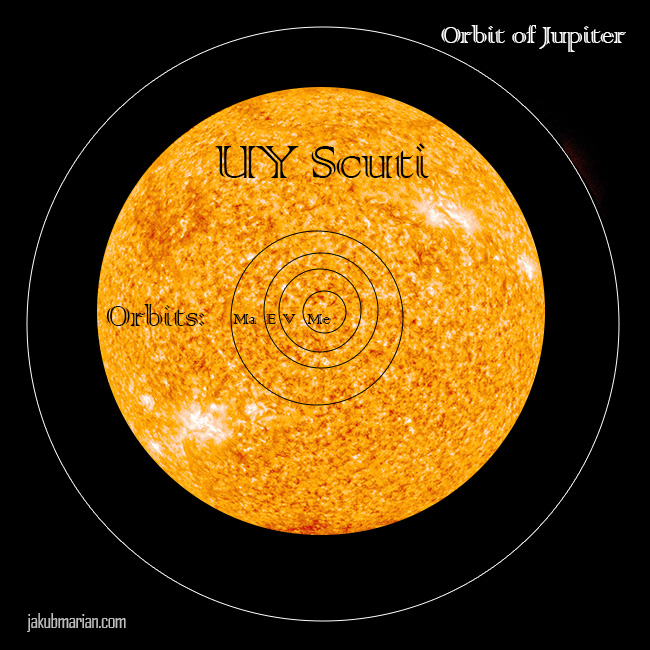
Scuti's location zoomed in
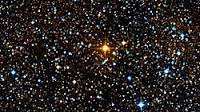
We can never be sure of how many stars there are in the galaxy. We can only estimate or make wild guess at the number. But according to an Australian National University study, the estimate is 70 sextillion. Put another way, that's 70,000 million million million. There are more stars than all the grains of sand on all the beaches of earth!
One of my absolute favorites is the Hubble ultra deep field. By collecting faint light over many hours of observation, it revealed thousands of galaxies, both nearby and very distant, making it the deepest image of the universe ever taken at that time.
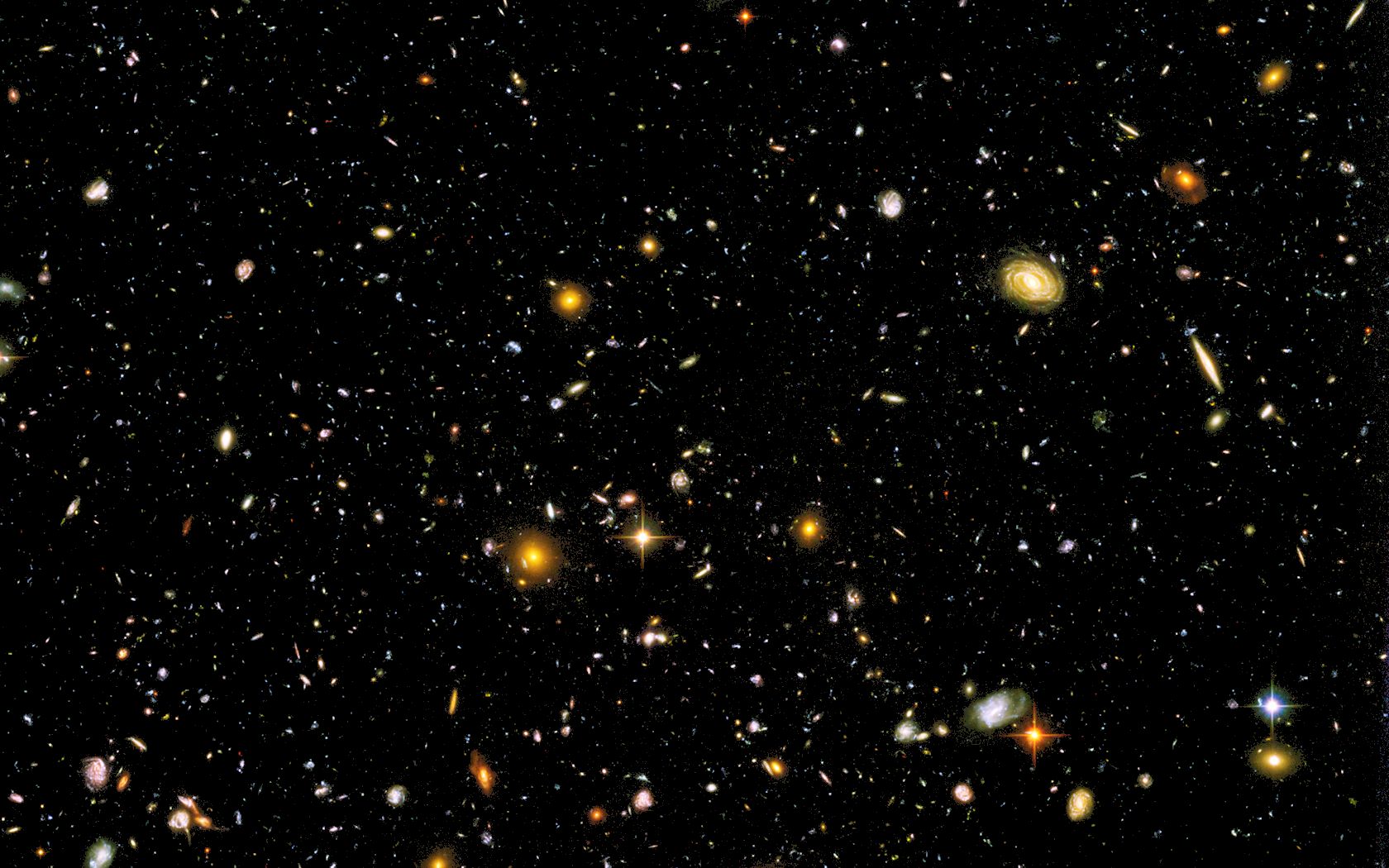
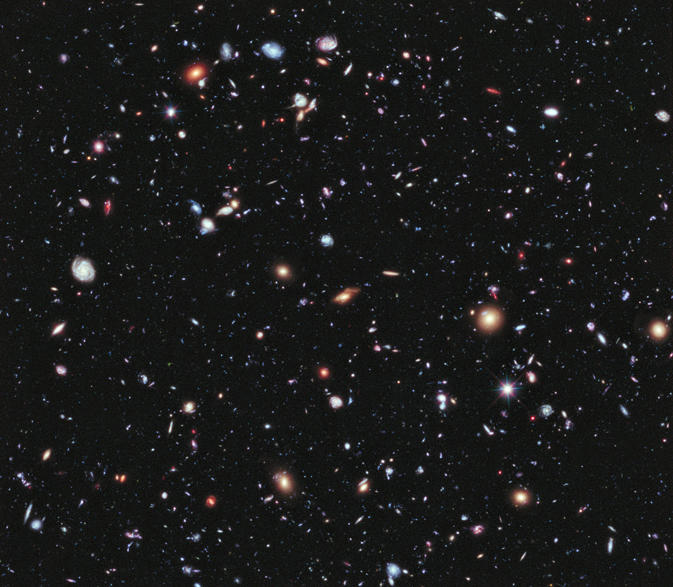
To me the most amazing thing about this photo is that it was taken in a tiny piece of the sky. Just imagine how immense the universe is if this is just from this tiny patch:
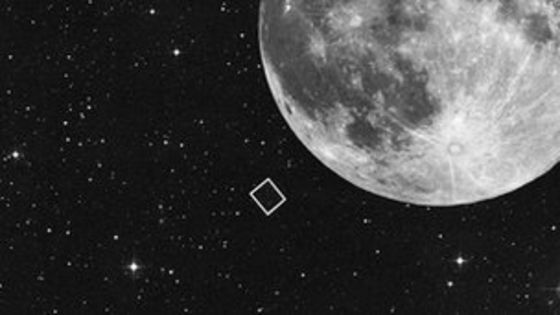
There’s a gas cloud in the constellation of Aquila that holds enough alcohol to make 400 trillion trillion pints of beer. It is ten thousand light years from Earth. The cloud is 1000 times larger than the diameter of our solar system. To down that much alcohol, every person on earth would have to drink 300,000 pints each day—for one billion years.
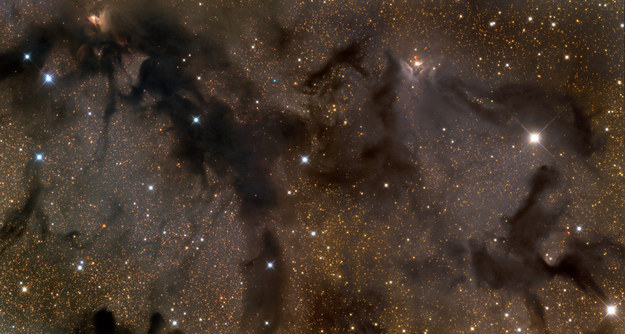
The largest structure in the observable universe is about 6-10 billion light years wide. That's right, light traveling at 186,282 miles per second would take 6-10 BILLION years to span the distance. Hercules–Corona Borealis Great Wall is about 6-billion light years wide and is about 10 percent of the observable universe. It lies in the Northern Hemisphere, centered on the border of the constellations Draco and Hercules.
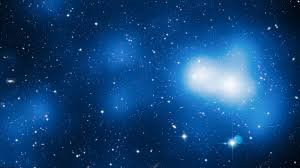
And last but not least, The milky way.
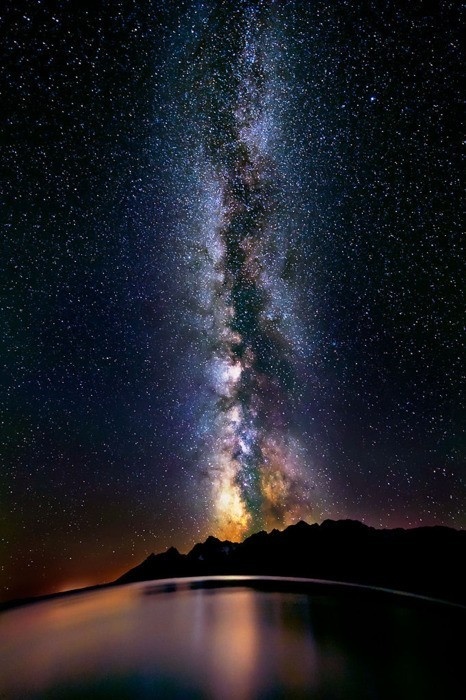
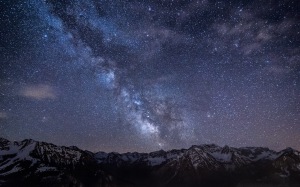
In 1999, Astronomers focusing on a star at the center of the Milky Way measured precisely for the first time how long it takes the sun to complete one orbit (a galactic year) of our home galaxy: 226 million years. It measures some 120,000–180,000 light-years in diameter. Our Solar System resides roughly 27,000 light-years away from the Galactic Center, on the inner edge of one of the spiral-shaped concentrations of gas and dust particles called the Orion Arm. As galaxies go, the Milky Way is a middleweight. The largest galaxy we know of, which is designated IC 1101, has over 100 trillion stars. Dwarf galaxies such as the Large Magellanic Cloud have about 10 billion stars. The Milky Way has between 100-400 billion stars
The center of our galaxy is called Sagittarius A, a massive source of radio waves that is believed to be a black hole that measures 14 million miles across or about the size of Mercury’s orbit. The most recent estimates place the age of the Universe at about 13.7 billion years. Our Milky Way has been around for about 13.6 billion of those years, give or take another 800 million.
So basically in your life time, you will move the distance around the Milky way equivalent to how far the MINUTE hand on a clock moves in ONE SECOND!
Earth from 3.7 billion miles away, taken by the Voyager spacecraft.
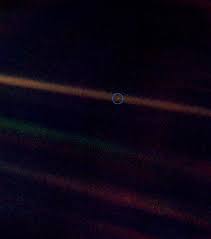
It is facts like these that make me wonder how anyone could think there isn't life out there somewhere. Has other life visited here? That's debatable, but we cannot be all alone in this massive expanse we call home.
You could fit ALL of the planets in our solar system between earth and the moon with about 5,000 miles to spare.

Light travels at 186,282 miles per SECOND! Most people know that even at that speed it takes 8 minutes and 20 seconds to reach earth, but did you know it takes 5.3 hours to reach Pluto?
The circumference of the Earth is 24,901 miles. You could fit 1.3 million Earths inside of the Sun. The Sun makes up 99.8% percent of the mass in our solar system. If the Sun was a soccer ball in New York Cities Central Park, the Earth would be a pea in Hawaii.

Though our star is no slouch, it is also not the biggest in the neighborhood. The biggest we have discovered in the universe is UY Scuti. A bright red super-giant and pulsating variable star in the constellation Scutum. It has a volume nearly 5 BILLION times that of the Sun! A hypothetical object travelling at the speed of light would take about seven hours to travel around UY Scuti, whereas it would take 14.5 seconds to circle the Sun. If placed in the center of our solar system it would engulf anything through the orbit of Jupiter.


Scuti's location zoomed in

We can never be sure of how many stars there are in the galaxy. We can only estimate or make wild guess at the number. But according to an Australian National University study, the estimate is 70 sextillion. Put another way, that's 70,000 million million million. There are more stars than all the grains of sand on all the beaches of earth!
One of my absolute favorites is the Hubble ultra deep field. By collecting faint light over many hours of observation, it revealed thousands of galaxies, both nearby and very distant, making it the deepest image of the universe ever taken at that time.


To me the most amazing thing about this photo is that it was taken in a tiny piece of the sky. Just imagine how immense the universe is if this is just from this tiny patch:

There’s a gas cloud in the constellation of Aquila that holds enough alcohol to make 400 trillion trillion pints of beer. It is ten thousand light years from Earth. The cloud is 1000 times larger than the diameter of our solar system. To down that much alcohol, every person on earth would have to drink 300,000 pints each day—for one billion years.

The largest structure in the observable universe is about 6-10 billion light years wide. That's right, light traveling at 186,282 miles per second would take 6-10 BILLION years to span the distance. Hercules–Corona Borealis Great Wall is about 6-billion light years wide and is about 10 percent of the observable universe. It lies in the Northern Hemisphere, centered on the border of the constellations Draco and Hercules.

And last but not least, The milky way.


In 1999, Astronomers focusing on a star at the center of the Milky Way measured precisely for the first time how long it takes the sun to complete one orbit (a galactic year) of our home galaxy: 226 million years. It measures some 120,000–180,000 light-years in diameter. Our Solar System resides roughly 27,000 light-years away from the Galactic Center, on the inner edge of one of the spiral-shaped concentrations of gas and dust particles called the Orion Arm. As galaxies go, the Milky Way is a middleweight. The largest galaxy we know of, which is designated IC 1101, has over 100 trillion stars. Dwarf galaxies such as the Large Magellanic Cloud have about 10 billion stars. The Milky Way has between 100-400 billion stars
The center of our galaxy is called Sagittarius A, a massive source of radio waves that is believed to be a black hole that measures 14 million miles across or about the size of Mercury’s orbit. The most recent estimates place the age of the Universe at about 13.7 billion years. Our Milky Way has been around for about 13.6 billion of those years, give or take another 800 million.
So basically in your life time, you will move the distance around the Milky way equivalent to how far the MINUTE hand on a clock moves in ONE SECOND!
Earth from 3.7 billion miles away, taken by the Voyager spacecraft.

It is facts like these that make me wonder how anyone could think there isn't life out there somewhere. Has other life visited here? That's debatable, but we cannot be all alone in this massive expanse we call home.
a reply to: FauxMulder
Why? Are you too closed-minded to think of the possibility that there might be no life out there somewhere?
Why? Are you too closed-minded to think of the possibility that there might be no life out there somewhere?
I think life has visited here. Hoping it'll finally be made public soon...
originally posted by: FauxMulder
Here are some of my favorite tidbits about space that can make you feel small, amazed, and in wonder about this amazing universe we inhabit. Some of these I'm sure people already know but they are good to go over every once in a while. Also if anyone has any they would like to add, please feel free to do so.
(...) It is facts like these that make me wonder how anyone could think there isn't life out there somewhere. Has other life visited here? That's debatable, but we cannot be all alone in this massive expanse we call home.
An excellent post and impressive presentation. Although most on here are aware of the sheer numbers involved when talking about distant worlds, these statistics are always mind-boggling whenever we actually think about the implications.
It certainly puts things into perspective! As far as I'm concerned, it's inconceivable to think we're alone ...
edit on 18-12-2016 by jeep3r because: spelling
these kinds of threads and UFO what made me join ATS
thanx for this nice short one
thanx for this nice short one
Awesome presentation sir!
I to am not that arrogant to think we are all alone and the best the universe has to offer.
If life started her, why not else where?
As stated, not sure about a visit from ET.......
I to am not that arrogant to think we are all alone and the best the universe has to offer.
If life started her, why not else where?
As stated, not sure about a visit from ET.......
Thanks for sharing and putting in the time to make this thread. The first picture of the milky way is just beautiful, pictures like those always make
me wonder how the earth/solar system would look from another planet with life.
S+F, Thank you
S+F, Thank you
a reply to: FauxMulder
In scanning the OP, I found this wonderful, truly informative tidbit:
"There’s a gas cloud in the constellation of Aquila that holds enough alcohol to make 400 trillion trillion pints of beer. It is ten thousand light years from Earth. The cloud is 1000 times larger than the diameter of our solar system. To down that much alcohol, every person on earth would have to drink 300,000 pints each day—for one billion years."
For myself, a UFO abductee, I prefer to have a relevant perspective on what we know as common-sensical information about our place n the cosmos. That log of data started in earnest in 1947 before my abduction in 1964. That epoch witnessed the reality that Earth was being visited by ETs via ways we suffer to imagine. So where are we today?
Strange as it may seem, most people in the world know the terms "UFO," or "flying saucer" either in english or in their own language. About half of the people in the US believe that UFOs are ET craft. On the other hand, the US government and science has continually ignored and denied that we have been visited which is quite contrary to the many bits of evidence known and probably mountains of evidence they hold that is unknown to the public.
Rather than be shaken, thrilled, or revolted by pointless mentioning of vast sums of alcohol in the galaxy, should we not be taking under advisement the distinct possibility of the UFO being truly real and start wondering how our house shapes up under cosmic scrutiny? We get hung up on the technology side of it and the miraculous ability of their means of transference, but what about pondering how they live their lives, how they do things. What are their philosophies of interacting with new finds and plans for those wayward fellows they come across? --Oh! Too scary isn't it? Who, especially governments, wants aliens coming here to pester us into being better cosmic citizens even as we continually lament our plight of being unable to correct our deficiencies?
Our seemingly unsolvable. self-perpetuated dilemma of always failing to reform ourselves seems ripe for an outside influence taking a hand in human development. Call them gods, benevolent beings or whatever, it seems time for humanity to wake from its instinctual slumber and face the reality of the cosmos that we are not alone and understand that we are not sacred or the pinnacle of perfection of mind and body in the Universe...and that there are others.
In scanning the OP, I found this wonderful, truly informative tidbit:
"There’s a gas cloud in the constellation of Aquila that holds enough alcohol to make 400 trillion trillion pints of beer. It is ten thousand light years from Earth. The cloud is 1000 times larger than the diameter of our solar system. To down that much alcohol, every person on earth would have to drink 300,000 pints each day—for one billion years."
For myself, a UFO abductee, I prefer to have a relevant perspective on what we know as common-sensical information about our place n the cosmos. That log of data started in earnest in 1947 before my abduction in 1964. That epoch witnessed the reality that Earth was being visited by ETs via ways we suffer to imagine. So where are we today?
Strange as it may seem, most people in the world know the terms "UFO," or "flying saucer" either in english or in their own language. About half of the people in the US believe that UFOs are ET craft. On the other hand, the US government and science has continually ignored and denied that we have been visited which is quite contrary to the many bits of evidence known and probably mountains of evidence they hold that is unknown to the public.
Rather than be shaken, thrilled, or revolted by pointless mentioning of vast sums of alcohol in the galaxy, should we not be taking under advisement the distinct possibility of the UFO being truly real and start wondering how our house shapes up under cosmic scrutiny? We get hung up on the technology side of it and the miraculous ability of their means of transference, but what about pondering how they live their lives, how they do things. What are their philosophies of interacting with new finds and plans for those wayward fellows they come across? --Oh! Too scary isn't it? Who, especially governments, wants aliens coming here to pester us into being better cosmic citizens even as we continually lament our plight of being unable to correct our deficiencies?
Our seemingly unsolvable. self-perpetuated dilemma of always failing to reform ourselves seems ripe for an outside influence taking a hand in human development. Call them gods, benevolent beings or whatever, it seems time for humanity to wake from its instinctual slumber and face the reality of the cosmos that we are not alone and understand that we are not sacred or the pinnacle of perfection of mind and body in the Universe...and that there are others.
a reply to: FauxMulder
Awesome stuff! Anything space wise to me is fascinating. When you analyze the numbers as far as sizes and distances, it is mind blowing.
Awesome stuff! Anything space wise to me is fascinating. When you analyze the numbers as far as sizes and distances, it is mind blowing.
Such a great thread. A perfect distraction from this dumb research paper I'm writing.
Just a random thought... Is the alcohol present in the constellation of Aquila in a form that can be imbibed, or is it gaseous? Talk about fizzy lifting drinks.
Just a random thought... Is the alcohol present in the constellation of Aquila in a form that can be imbibed, or is it gaseous? Talk about fizzy lifting drinks.
originally posted by: MuldersGirl
Such a great thread. A perfect distraction from this dumb research paper I'm writing.
Just a random thought... Is the alcohol present in the constellation of Aquila in a form that can be imbibed, or is it gaseous? Talk about fizzy lifting drinks.
Nope, it is a mix of 32 compounds, some which is carbon monoxide, hydrogen cyanide, and ammonia.
Would be cool if you could though and then bottle and sell the stuff. $$$
Great post! Make us question all the pathetic squabbling about religion and race. Thank you Sir
a reply to: FauxMulder
I just love the idea of a giant cloud of alcohol.
I just imagine blind drunk aliens crashing spaceships into each other, cursing their intuition to give it a whiff.
I know, silly.... Aliens don't even have a nose.
I just love the idea of a giant cloud of alcohol.
I just imagine blind drunk aliens crashing spaceships into each other, cursing their intuition to give it a whiff.
I know, silly.... Aliens don't even have a nose.
"The Sun makes up 99.8% percent of the mass in our solar system".
..and isn't the sun just considered a low mass star , bet "sunnyboy" has a binary sibling , coming home for a much needed rest , after such a long journey.
..and isn't the sun just considered a low mass star , bet "sunnyboy" has a binary sibling , coming home for a much needed rest , after such a long journey.
new topics
-
Joe Rogan conspiracy (maybe)
ATS Skunk Works: 1 hours ago -
Results of the use of the Oreshnik missile system in Dnepropetrovsk
World War Three: 3 hours ago -
Nigel Farage now the Most Favoured UK Politician
Regional Politics: 5 hours ago -
Little Johnny and Larry should team up
General Chit Chat: 11 hours ago -
Will Us use alien technology to fight in ww3?
World War Three: 11 hours ago
top topics
-
Results of the use of the Oreshnik missile system in Dnepropetrovsk
World War Three: 3 hours ago, 10 flags -
Little Johnny and Larry should team up
General Chit Chat: 11 hours ago, 9 flags -
Will Us use alien technology to fight in ww3?
World War Three: 11 hours ago, 2 flags -
Nigel Farage now the Most Favoured UK Politician
Regional Politics: 5 hours ago, 2 flags -
Joe Rogan conspiracy (maybe)
ATS Skunk Works: 1 hours ago, 2 flags
active topics
-
Results of the use of the Oreshnik missile system in Dnepropetrovsk
World War Three • 90 • : YouSir -
Well we know Putins ICBMs won't fail in their silos
World War Three • 198 • : Lazy88 -
Post A Funny (T&C Friendly) Pic Part IV: The LOL awakens!
General Chit Chat • 7815 • : baddmove -
President-Elect TRUMP Picks Former Florida A.G. PAM BONDI to be U.S. Attorney General.
2024 Elections • 53 • : Xtrozero -
Joe Rogan conspiracy (maybe)
ATS Skunk Works • 2 • : watchitburn -
Little Johnny and Larry should team up
General Chit Chat • 3 • : bluesman023 -
President-Elect DONALD TRUMP's 2nd-Term Administration Takes Shape.
Political Ideology • 238 • : WeMustCare -
Will Us use alien technology to fight in ww3?
World War Three • 11 • : BeyondKnowledge3 -
A Mysterious Orb filmed over NYC by local news
Aliens and UFOs • 25 • : ArMaP -
The Popular Vote does not matter
Political Issues • 14 • : texas thinker
19
